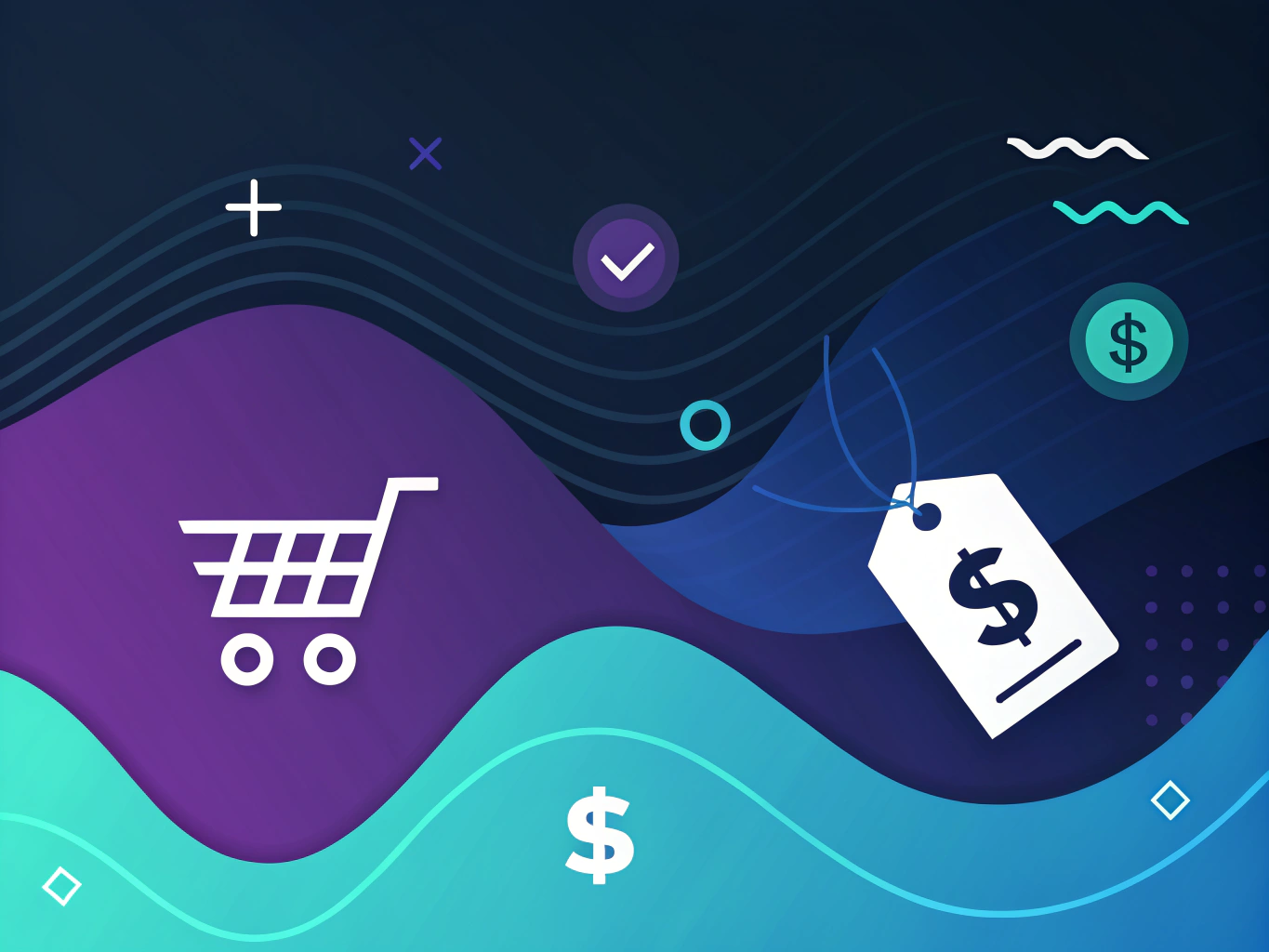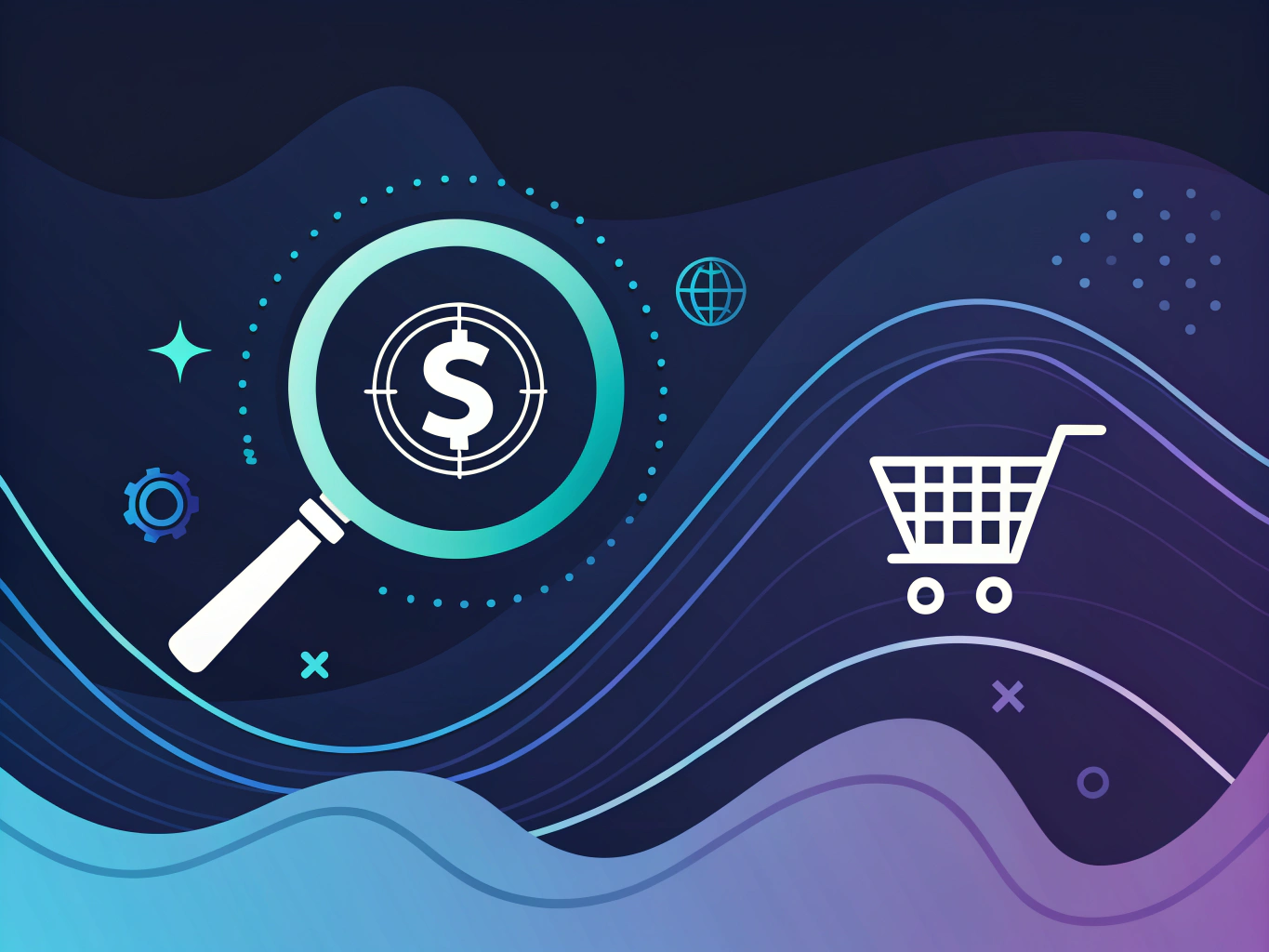Let’s be honest – we’ve all had that moment scrolling through Instagram, watching someone flex their “six-figure reselling empire” built from thrifting $5 shirts and flipping them for $100. They make it look effortless, don’t they? Yet here most of us are, drowning in inventory that won’t move, or worse – too scared to even start because the whole thing feels like a get-rich-quick scheme.

Here’s the thing about reselling that those social media gurus won’t tell you: it’s not about finding that one golden ticket item that’ll make you rich overnight. It’s about building systems, understanding markets, and yes – sometimes digging through actual garbage to find treasure. I’ve been there, done that, and got the questionably-stained t-shirt to prove it.
How to Resell: Breaking Down the Basics

At its core, reselling is pretty simple: buy low, sell high. But if it were really that easy, everyone would be doing it successfully. The real art of reselling lies in understanding what “low” and “high” actually mean in different contexts. It’s not just about price tags – it’s about value perception, market timing, and knowing your audience.
Types of Reselling That Actually Work
There’s more than one way to skin this cat (metaphorically speaking, please don’t come after me, PETA). Here are the main approaches that I’ve seen work consistently:
- Retail Arbitrage: Finding items on clearance at retail stores and reselling them at full price elsewhere
- Online Arbitrage: Same concept, but hunting deals on Amazon, eBay, and other online platforms
- Wholesale Reselling: Buying in bulk directly from manufacturers or distributors
- Thrifting/Estate Sales: The old-school treasure hunt method
Finding Your Reselling Sweet Spot
The best items to resell aren’t always what you’d expect. While everyone else is fighting over designer handbags and limited edition sneakers, some of the most profitable items I’ve found were vintage board games and discontinued kitchen appliances. The key is finding your niche – something you understand well enough to spot value others might miss.
Building Your Reselling Operation
Start small, but think big. Your first sales might happen from your living room floor, but if you’re serious about scaling, you need to treat this like a real business from day one. That means:
- Setting up proper inventory management systems
- Creating a pricing strategy that accounts for all your costs
- Developing relationships with reliable suppliers
- Building a customer service approach that sets you apart
I learned this the hard way when I started reselling books on Amazon. What began as a few boxes in my garage quickly turned into a logistical nightmare when orders started picking up. Trust me, you don’t want to be digging through unmarked boxes at 2 AM trying to find that one specific edition of Harry Potter someone ordered.
Platform Selection: Where to Sell What
Different platforms attract different buyers with different expectations. Amazon buyers expect prime shipping and professional service. eBay buyers are often hunting for deals and unique items. Poshmark is all about style and presentation. Understanding these differences is crucial for how you position your products and build your reselling vendors network.
The most successful resellers I know didn’t get there by spreading themselves thin across every platform. They picked one or two channels that aligned with their business model and mastered them completely. Expanding to international markets, such as the Amazon Japan store, can also open up new revenue streams for resellers with niche or globally appealing products. It’s better to be exceptional on one platform than mediocre on five.
Getting Started as a Reseller: From Research to Revenue

Let’s be honest – most people getting into reselling think they’ll just buy some stuff cheap and flip it for profit. Sounds simple enough, right? Yet I’ve seen countless would-be resellers crash and burn because they skipped the critical foundation work.
Think of starting a reselling business like building a house. You wouldn’t just start stacking bricks without a blueprint and solid foundation. The same applies here – proper market research and setup are your blueprint and foundation for a sustainable reselling operation. Understanding product identifiers, such as ASIN meaning on Amazon, can also help you research demand and competition effectively.
Market Research: Your Secret Weapon for Profitable Reselling
I always tell my ecommerce clients that research isn’t just googling “best things to resell” (though that’s not a bad place to start). Real market research means understanding your potential customers, competition, and most importantly – your unique advantage.
Here’s what separates successful resellers from the rest: they don’t just chase trends, they create micro-niches. Maybe you’re incredibly knowledgeable about vintage Star Wars collectibles, or perhaps you understand the ins and outs of how to sell clothes better than anyone else. That specialized knowledge? That’s your superpower.
Finding Your Perfect Product Mix
When it comes to how to start reselling, product selection is where most people get stuck. They either try to sell everything under the sun (bad idea) or focus solely on items with the highest theoretical margins (also problematic).
Instead, consider these factors when choosing your product mix:
- Storage requirements and shelf life
- Shipping costs and complexity
- Competition levels on various platforms
- Your expertise and passion for the products
- Local availability of inventory
Legal Stuff You Can’t Ignore
Look, I know talking about business licenses and reseller permits is about as exciting as watching paint dry, but ignore this part and you might end up with more than just unsold inventory to worry about. You need to understand how to become a reseller legally – that means getting your permits, understanding tax obligations, and yes, keeping proper records.
Setting Up Your Reselling Operation Right
Now comes the part that makes most creative entrepreneurs groan – the legal and financial setup. But trust me, getting this right from the start will save you massive headaches down the road.
Legal Requirements: Not Sexy, But Essential
Whether you’re planning to resell on Amazon or stick to local markets, you need to handle the basics:
- Business registration (LLC is usually your best bet)
- Reseller permits for tax-free inventory purchases
- Sales tax certificates
- Platform-specific requirements (like Amazon’s professional seller account)
Financial Planning That Won’t Make Your Eyes Glaze Over
Look, I’m not going to bore you with complex spreadsheets, but you need some basic numbers to work with. Think of it like a video game – you need to know your health bar (cash flow) and power meter (profit margins) to stay in the game.
For those wondering how to become a reseller without breaking the bank, start with these financial basics:
- Set aside initial inventory capital (start small, scale gradually)
- Track your purchase prices and ALL associated costs
- Maintain a separate business bank account
- Use basic accounting software from day one
Sourcing Products: The Art of the Deal
This is where the rubber meets the road. Your success in reselling largely depends on your ability to source products at the right price. Whether you’re looking to resell items on Amazon or flip vintage finds, your sourcing strategy is crucial.
Physical Product Sourcing Strategies
The best items to resell often come from unexpected places. Here’s where to look:
- Liquidation sales (but be careful – not all “deals” are actually deals)
- Estate sales (go early, bring a UV light for authenticity checks)
- Thrift stores (develop relationships with managers for first dibs)
- Retail arbitrage (clearance sections are your friend)
- Wholesale suppliers (start small, build relationships)
Digital Product Reselling: The New Frontier
Don’t overlook digital products. They’re easier to store and ship (obviously), and can provide excellent margins. Consider:
- Software licenses
- Digital courses (with resell rights)
- PLR (Private Label Rights) content
- Digital art and designs
Building Your Sales Machine

Now for the fun part – actually selling stuff. But here’s where most resellers get it wrong: they try to be everywhere at once. Instead, master one platform before expanding.
Choosing Your Sales Channels
Different products work better on different platforms. For example, if you’re focusing on how to resell clothes, you might want to start with Poshmark or Depop rather than Amazon. Speaking of Amazon, reselling on Amazon requires a different approach than eBay or Etsy.
Consider these factors for each platform:
- Fee structure and profit margins
- Competition levels
- Customer demographics
- Platform-specific rules and restrictions
- Shipping and fulfillment options
Setting Up Your Infrastructure
You don’t need fancy software to start, but you do need systems. Here’s your basic tech stack:
- Inventory tracking system (even a spreadsheet works to start)
- Photo editing tools for product images
- Shipping label printer
- Basic accounting software
- Customer service management system
Remember, the best way to build a sustainable reselling business isn’t by chasing quick flips – it’s by building systems that can scale. Start small, but think big. Document your processes from day one, even if it’s just notes in your phone.
And here’s something most guides won’t tell you: your biggest asset isn’t your inventory or your cash flow – it’s your reputation. In a world where anyone can become a reseller, trust is your real competitive advantage. Build it carefully, protect it fiercely.
Scaling Your Reselling Empire: From Side Hustle to Sustainable Business
Look, I’ve seen countless resellers hit that dreaded plateau – you know the one. You’re making decent money flipping items on Amazon or eBay, but suddenly growth flatlines. The question isn’t how to resell anymore; it’s how to scale beyond the one-person show.
The secret? It’s not just about finding more things to resell (though that’s part of it). It’s about building systems that can handle 10x your current volume without breaking a sweat. Think of it like upgrading from a bicycle to a Tesla – same destination, entirely different capacity.
Building Your Reselling Machine
First things first: if you’re still manually tracking inventory in spreadsheets and handwriting shipping labels, we need to talk. Modern reselling businesses need modern tools. I recommend starting with:
– Inventory management software that syncs across all platforms
– Automated pricing tools that adjust based on market conditions
– Shipping automation that integrates with multiple carriers
– Customer service templates and automation for common queries
The Best Items to Resell at Scale
Here’s where things get interesting. While garage sale finds can be profitable, scaling requires predictable sourcing. The best items to resell for sustainable growth typically fall into these categories:
– High-margin electronics (60%+ profit margin)
– Limited edition collectibles
– Discontinued product lines
– Seasonal items bought off-season
– Bundle opportunities
Advanced Reselling Strategies That Actually Work
Want to know what separates six-figure resellers from weekend warriors? It’s not just about knowing how to become a reseller – it’s about thinking like a CEO. Here’s what that looks like in practice:
Diversification is Your Friend
Remember Blockbuster? They were the kings of video rental until they weren’t. Don’t put all your eggs in one marketplace basket. Smart resellers are building their presence across multiple platforms, including Amazon FBA, eBay, and Walmart WFS, to reach different customer bases and reduce reliance on a single channel.
- Amazon (FBA and merchant-fulfilled)
- eBay for unique/vintage items
- Social media marketplaces
- Their own Shopify stores
- B2B wholesale channels
The Art of Vendor Relationships
Here’s something most reselling guides won’t tell you: your suppliers are your secret weapon. I’ve seen reselling vendors bend over backwards for reliable partners. Build these relationships like you’re dating – consistency, communication, and occasional gifts go a long way.
Future-Proofing Your Reselling Business

The reselling landscape is changing faster than AI can generate product descriptions (trust me, I would know). Here’s what’s coming and how to prepare:
Automation and AI Integration
AI isn’t just for writing product descriptions anymore. We’re seeing tools that can:
– Predict price fluctuations
– Identify trending products before they peak
– Automate customer service responses
– Optimize inventory levels
– Generate product photography and listings
Sustainability in Reselling
The best way to sell used clothes? Make it sustainable. Modern consumers care about environmental impact, and smart resellers are turning this into a competitive advantage. Consider:
- Eco-friendly packaging
- Carbon-neutral shipping options
- Transparent sourcing practices
- Circular economy messaging
Common Pitfalls and How to Avoid Them
Let me share some war stories – or better yet, let me help you avoid making the same mistakes I’ve seen countless times in the reselling business:
The Cash Flow Trap
You know what kills most reselling businesses? It’s not competition or bad products – it’s poor cash flow management. When you’re learning how to resell items on Amazon or any other platform, remember: profit isn’t the same as cash flow. Keep enough liquid capital to restock your best-sellers, even if it means slower growth.
The Platform Dependency Problem
I’ve seen too many resellers build their entire business on a single platform, only to get suspended or see their margins crushed by fee increases. Your resell store should be platform-agnostic, ready to pivot when needed.
Final Thoughts: Your Reselling Journey
Whether you’re just figuring out how to start reselling or you’re ready to scale to seven figures, remember this: reselling isn’t just about buying low and selling high. It’s about building a sustainable business that can weather market changes and grow with you.
The future belongs to resellers who can adapt quickly, leverage technology, and build strong relationships with both suppliers and customers. And hey, if you’re feeling overwhelmed, remember: every successful reseller started with that first flip.
Start small, think big, and most importantly – stay nimble. The reselling landscape will keep evolving, but the fundamentals of good business never change. Now get out there and start building your empire – one product at a time.
👉👉 Create Photos, Videos & Optimized Content in minutes 👈👈
Related Articles:
- Amazon Reselling in 2024: Beginner’s Success Blueprint
- Amazon Reseller: 5 Steps to Launch Your Business in 2024
- How to Sell on Shein: A Beginner’s Guide to Success
Frequently Asked Questions
What are the best items to resell for profit?
The best items to resell for profit often include electronics, designer clothing, limited edition sneakers, and vintage collectibles. These items typically have high demand and can be sourced at a lower cost from clearance sales, thrift shops, or online marketplaces. Additionally, small home appliances, toys, and books can also be profitable if purchased in bulk or found at a significant discount.
How to resell tickets on Ticketmaster?
To resell tickets on Ticketmaster, first log into your account and navigate to the ‘My Tickets’ section. Select the event you wish to sell tickets for, click ‘Sell’ and follow the prompts to set your price and listing details. Ticketmaster will handle the transaction and transfer the tickets to the buyer once they are sold, providing a seamless experience.
How to resell concert tickets?
Reselling concert tickets can be done through platforms like Ticketmaster, StubHub, or SeatGeek, which offer secure processes for both buyers and sellers. Ensure you comply with the platform’s resale policies and local laws concerning ticket resale. Always set a competitive price by researching similar tickets to ensure a quick sale.
How to resell items on Amazon?
To resell items on Amazon, you need to create a seller account, which can be either individual or professional depending on your sales volume. Once your account is set up, list your products by providing detailed descriptions, quality images, and competitive pricing. Utilize Amazon’s Fulfillment by Amazon (FBA) service to handle shipping and customer service, which can increase your chances of success.
How to resell books?
Reselling books can be profitable if you focus on popular genres, textbooks, or rare editions. You can sell them through platforms such as Amazon, eBay, or specialized sites like AbeBooks. Ensure you accurately describe the condition of the books and price them competitively to attract buyers.
About the Author
Vijay Jacob is the founder and chief contributing writer for ProductScope AI focused on storytelling in AI and tech. You can follow him on X and LinkedIn, and ProductScope AI on X and on LinkedIn.
We’re also building a powerful AI Studio for Brands & Creators to sell smarter and faster with AI. With PS Studio you can generate AI Images, AI Videos, Chat and Automate repeat writing with AI Agents that can produce content in your voice and tone all in one place. If you sell on Amazon you can even optimize your Amazon Product Listings or get unique customer insights with PS Optimize.
🎁 Limited time Bonus: I put together an exclusive welcome gift called the “Formula,” which includes all of my free checklists (from SEO to Image Design to content creation at scale), including the top AI agents, and ways to scale your brand & content strategy today. Sign up free to get 200 PS Studio credits on us, and as a bonus, you will receive the “formula” via email as a thank you for your time.
